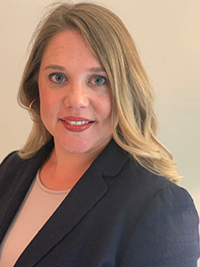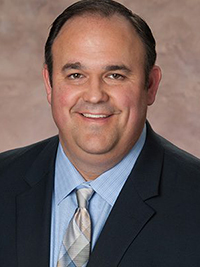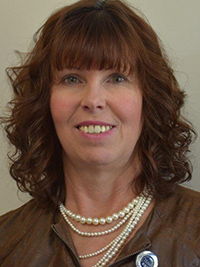In the wake of the COVID-19 pandemic, healthcare organizations have had to largely reassess their financial practices to find greater efficiencies, improve margins and help grow revenues. Data analytics plays a crucial role in successful efforts. However, many healthcare systems and hospitals are hampered by a lack of actionable or shared data and struggle to achieve those goals.
Participants of an HFMA Executive Roundtable held June 27 discussed.how healthcare providers are taking steps to encourage data sharing among units and create a single source of truth for operational and patient data.
Several post-pandemic revenue challenges drive these efforts. Those challenges include increased costs, disruptions in elective services and changes in reimbursement practices by insurance payers. Faced with growing financial challenges, many hospitals and healthcare systems recognize that robust investment in data and analytics is critical for smart, data-driven decisions that will help transform business operations.
As you interact with other business leaders on where margin improvement opportunities exist, where do you see the areas of greatest opportunity?
Luke Rockenbach: We see specialization in payers and collections to be the difference maker. Special expertise to navigate third-party liability (such as motor vehicle accidents), workers’ compensation and government payers reduces friction, gets claims paid faster and increases patient satisfaction.
We will also not cut our way to greatness. Investing in our people and giving them the tools they need to do their work better has been a cornerstone of our success. Growth and caring for more people in our communities expands and fulfills the mission and drives margins.
Sharon Kelley: We see four top areas where opportunities exist:
- A patient-centric approach: Focusing on patient satisfaction and providing exceptional experiences that lead to higher retention rates, repeat business and positive referrals
- Executing growth strategies: Finding revenue streams through new ventures and partnerships that are proven to positively impact the overall margin
- Automation of administrative functions, specifically in the revenue cycle
- Denials management
What are the top challenges you face when using data and analytics for margin improvement?
Amy Weeks: We struggle to get timely and accurate data for the department. We’re primarily centralized — five of us can route and distribute data — but getting data to the department level has been a struggle. We use more of our clearinghouse and SSI Claims Analytics to get our claims data. We found that is more the source of truth.
Eric Hemingway: Our biggest challenges are a lack of transparency and a lack of data. There is also a lack of funding. We have a long project list and not enough people to do it. Plus, with all the reporting requests from the organization to support, we can’t always get to a lot of the discovery work that we want to do internally.
I’ve been with the group for about five years, and we started building our own data warehouse about a year after I got here. Over the last four years, we’ve received federal funding to build out our data warehouse to better access the information we need. We’re trying to reduce avoidable denials and get more cash off the business we’re already producing. We’re trying to develop a scalable model — basically, become an [management services organization] MSO model, if you will — and then internalize revenue cycle management. But we’re not positioned to do that yet.
Stephanie Fischer: We have an enterprise analytics team, and we also have population health that obtains all the payers’ claims data. I negotiate the [value-based reimbursement] VBR contracts and try to work with both teams to obtain data, but it is a challenge. I think the exclusions are the most challenging part for me — figuring out what is included and
what is excluded in terms of services and plans.
Rockenbach: It depends on the use case, whether it’s our clinical team, our financial teams or our revenue cycle team. Thinking it through from that linear approach has been helpful. But it is a slog. That may be partially due to how our tools are set up. We have Epic across 50 hospitals. I think it’s also just the nature of a 4,000-person revenue cycle and a 130,000-person organization. There are just so many different priorities.
Terri Meier: Resources and expectations are top challenges for us. For example, when you run a report, you think somebody will take that information and do something with it. When they don’t, for lack of a better metaphor, it’s like leading the horse to water. I don’t think that is primarily a result of the reporting but more of the role or responsibility in the organization and expectations. The need is to change that culture.
I’m hiring an analyst to work with the other departments that own data I need to drive decisions in my department. Those other units are taxed, and our department doesn’t always get prioritized along with clinical data tasks. So, I have to establish a resource for myself to help me get at the data I need. Right now, we don’t have one source of truth. But we need to get to that point because we’ve got departments running reports out of different places and spinning their own narratives, which may or may not be accurate.
If you were to compare your role, and the role of data and analytics in your organizations, what would you say has changed pre- versus post-pandemic?
Kelley: Based on our experience, organizations have grown increasingly dependent on data in response to post-pandemic financial challenges, such as increased costs and disruptions in elective services. These challenges have compelled healthcare organizations to embrace innovation and efficiency like never before. Therefore, a heightened investment in data and analytics has become essential for making prudent, data-driven decisions that continue transforming our business operations.
By incorporating these data-driven insights into our daily workflows, we gain the agility to respond rapidly to the ever-changing healthcare landscape. Our environment fosters an organic space for innovation, where new and cutting-edge technologies such as robotic process automation and AI play a crucial role, with data and analytics insights serving as the key drivers and catalysts for these innovations.
Rockenbach: The first word that comes to mind is urgency. Response time to payer actions is paramount. Analytics drive action. There is urgency to develop the insight and, more importantly, change the workflow and systems to implement changes. I can talk for hours about the need to spend more time on implementation — developing the insight is the starting point.
Fischer: We previously reported to the chief insurance officer, but he retired, and now we’re reporting to the CFO. So, our world has completely changed.
Previously, there were no data-driven decisions; there was no ROI. When we started reporting to the CFO, they wanted to know, “What is your ROI? Why are you guys doing this?” It turns out that nothing we were doing in the organization made sense. We’ve now changed our approach. It’s more data-driven, and we’re more focused on increasing revenue. So that’s where we’re at now.
As you consider your organization’s ability to get actionable information into the hands of your end users, what things have you done that are positively impacting roll-out and adoption?
Kelley: One of our key differentiators is the investment we’ve made in an embedded analytics and automation department. As part of Mayo Clinic’s “Bold. Forward.” 2030 strategy to become a data-centric organization, we have prioritized this department, demonstrating our commitment to that goal. The primary role of this department is to deliver scalable and sustainable automated data products and create a seamless experience for our workforce by offering a one-stop shop for our key areas of focus.
This streamlined approach enables our leadership to access a single source of truth, promoting more effective collaboration both within the department and as we work to support our clinicians in the practice. Additionally, we hold stakeholders accountable for key metrics and [key performance indicators] KPIs, ensuring widespread adoption of these tools as we transform how we approach data.
Rockenbach: To hardwire operational changes, we’ve taken a centralized approach to job aids and performance quality assurance. We’re a large health system, working millions of accounts, and we are too big to manage at the individual level. A systems approach is key to driving lasting change. Automation is the second piece of the puzzle. Automation removes the options for human discretion and creates a consistent response. Easier to evaluate results and make systemic changes.
What has been your experience building a data warehouse to aid in the process?
Hemingway: The effort has been never-ending. It will eat as much money as you give it. But we’ve made some good progress and had a pretty good lift in collections off of existing business, and we’re working on some denial information. We’ve also done some front-end cleanup — you know, garbage in, garbage out. We’re cleaning up data around coverage, discovery, insurance and other essential areas.
Does your organization have incentives around data quality, and if so, how proactively do you manage them?
Weeks: We have tried to set up some reporting models to score ourselves. We put up some dashboards and things along that line to show us where we are on quality reporting. But it has been a struggle getting that daily reporting going. It has been hard to get the department-level data you need to impact that on a daily basis.
Rockenbach: I think about incentives, and I think about quality outside of the government requirements of data quality. The incentive tends to be for the payer to push more risk to the provider or the patient. Increasing the quality requirements in the contract could very well create better healthcare, which is ultimately a great goal. But I think we ended up with maybe less reimbursement.
We’ve always had joint operating committees. But last year, I brought many in our leadership together. Because I worked at one of the payers for nine months, I made some really good friends who I called up and said, “I want to come down to the office, and I want to have a summit. I want to find out what you care about — what we care about.” They’re so hungry for our data so that they can do better actuarial work and cost modeling. They really want to take on more delegated patients and take on more risk. So, the goal is finding the right way to structure the economics that allows us to care for more patients and ultimately have greater market share. That’s the path to a better partnership with the payer, but it all starts with this notion of quality data.
Hemingway: We work in approximately 60 different facilities, and 80% to 85% of our revenue comes from major contract hospitals. The continued shift of work from the hospital to the [ambulatory surgery center] ASC has created inefficiency at our hospitals.
What is interesting is the lack of focus on our utilization, whether it’s at the hospital or even at the ASC. A lot of those facilities are still printing money from their view. So, they probably don’t worry about the fact that they can increase their margins. Simply, not all our hospitals focus on our utilization. One of our big initiatives is to propose what it would cost us to build our own internal reporting. Then I can sit down and talk with the hospital CFO and say, “Look, this is what you’re losing.”

Conclusion
One of the most important lessons of the pandemic was the need for healthcare organizations to be agile and resourceful. That is especially true as mounting financial pressures make it difficult for many to maintain their services and ensure quality care.
Doing so requires better data management and data quality practices to ensure that all units share data as needed and create a single source of truth from which to make decisions and drive operations.
A key differentiator for healthcare organizations will be the degree to which they invest in data analytics tools and adopt advanced technologies such as automation and AI. Such tools enable the organization to be flexible and adapt to changes in the market as they occur.
Panelists

STEPHANIE FISCHER
Director of payment innovation at Lehigh Valley Health Network in Allentown, Pennsylvania

ERIC HEMINGWAY
CFO of Metropolitan Anesthesia Consultants LLP, Dallas

SHARON KELLEY
Chair of revenue cycle at Mayo Clinic in Rochester, Minnesota

TERRI MEIER
Vice chancellor of revenue cycle at the University of Arkansas, Little Rock

LUKE ROCKENBACH
Group vice president, chief transformation officer of revenue cycle at Providence in Renton, Washington

AMY WEEKS
Revenue cycle director at Hardin Medical Center, Savannah, Tennessee
About Syntellis Performance Solutions
Syntellis Performance Solutions, now part of Strata Decision Technology, provides innovative enterprise performance management software, data, and intelligence solutions for healthcare, higher education, and financial institutions. Syntellis’ solutions include Axiom, Connected Analytics, and Stratasan software. These solutions help finance professionals elevate performance by acquiring insights, accelerating decisions, and advancing
their business plans. With over 2,800 organizations and 450,000 users relying on its solutions, Syntellis has proven industry expertise in helping organizations transform their visions into reality. For more information, please visit www.syntellis.com.
This published piece is provided solely for informational purposes. HFMA does not endorse the published material or warrant or guarantee its accuracy. The statements and opinions by participants are those of the participants and not those of HFMA. References to commercial manufacturers, vendors, products, or services that may appear do not constitute endorsements by HFMA.






